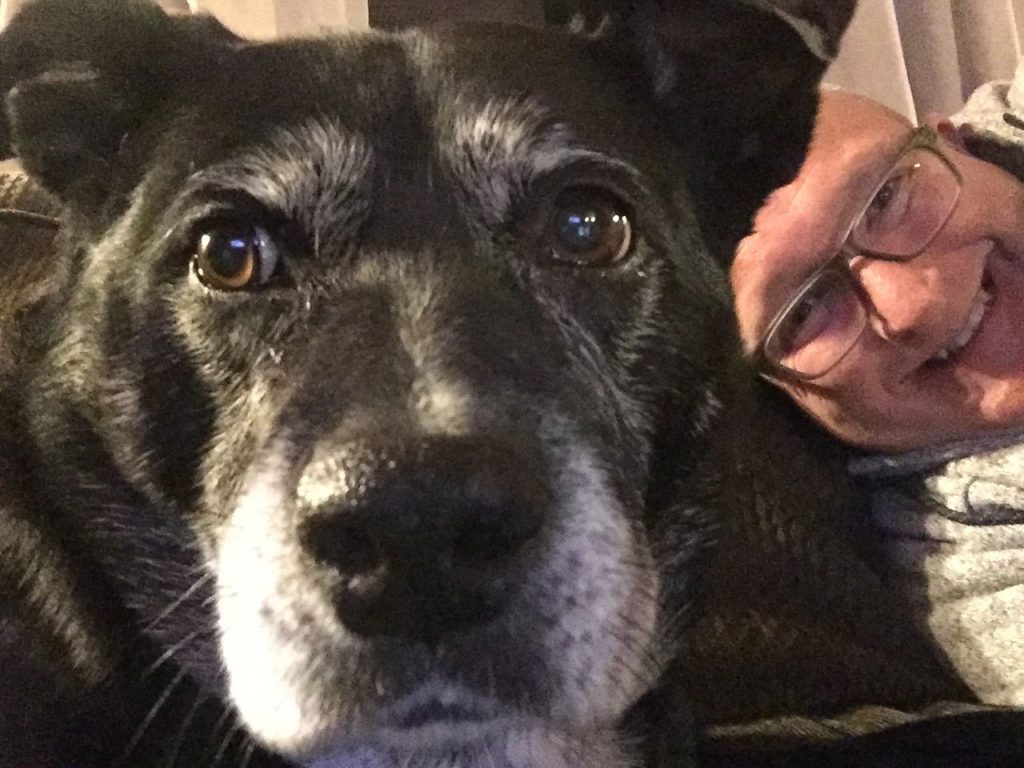A man’s best friend: Where would we be without dogs during our coronavirus quarantine?
It was late afternoon on Day Umpteen of our never-ending coronavirus quarantine when I realized that something was missing. Black with a white spot. Four legs and a wagging tail. Almost always up my you-know-what when I’m in the kitchen.

But, now, it was at least an hour since I’ve seen our pooch Maggie, and since these are the kinds of things you do when you’re locked in your house all day, I decided it was time for a wellness check. I searched the usual spots. Dining room. Sunroom. Basement. Backyard. I finally found her curled up in her corner of our bedroom, an unusual midday hiding spot.
“There you are!” I said.
And the look she gave me next, with her sad chocolate eyes peering up from her little bed, seemed to be sending a message …
“Yeah. You found me. Look, buddy, I like you but this has to stop. Get a job. Get a hobby. The next time I see you, you’d better bring me a piece of bacon, because otherwise, I kind of need some social distancing from all of YOU!”
Maggie is 12. She is a good dog, friendly and happy, and after (gulp) nearly two weeks of this lockdown I have two observations about her:
1. I’m not sure our family would have survived this long without her. She is a living, breathing security blanket, a distraction for the kids during their homeschooling, a comforting presence for the adults while watching the latest news, and most of all, a reason to leave the house several times a day without people looking at us like we’re social pariahs.
2. We are in serious danger of driving her crazy.
Oh, to be sure, she likes the attention — mostly. But it is a lot of attention. This is a dog who has spent most of her life sleeping comfortably until the action begins around dinnertime. Now, our house is like Port Authority. The movement never stops, from the crack of dawn until the lights finally go out around midnight.
I found my son teaching her how to fist bump last night. If she had opposable thumbs, Maggie might be using one of them to hitchhike out of here.
“I think dogs definitely recognize that something is different,” Laurie Bergman told me as she walked her own Australian Terriers this week. She is one of about 100 veterinary behaviorists — animal shrinks, essentially — certified to practice around the world.
“My patients who have social anxiety issues are loving this. Their people are around all the time. But my patients who need a little space are having a different experience. Dogs are going to read a lot of their people’s emotional states.”
Bergman, whose practice is based in Robbinsville, has treated animals of all sizes. She said she once worked at the San Diego Zoo with a cheetah who was having emotional problems, and I spent the rest of the day envisioning the cartoon mascot for Cheetos lying on a therapist’s couch and talking about his parents.
Hey, I’ve got the time to kill, okay?
But Bergman mostly works with dogs. They thrive on a routine, so while it might seem like a dogtopia if you’re suddenly walking them 17 times a day to get away from your family, that might not be beneficial to their own mental health.
“I think for a lot of our pets, maintaining somewhat of a normal routine is important,” she said. “For me, it means — and they don’t give me much of a choice about this — getting up at the same time every morning and taking them for a walk.”
Some pets will need the downtime. Others, especially the active ones, might miss their trips to the dog park. We might need to stay six feet apart from each other, but so far, no one is calling for nationwide canine social distancing.
“This is a good time, if you’re stuck in the house and you need a break, to grab some treats and teach your dog something new,” she said. “Activities like that can solidify the bond between the owner and the pet.”
I followed her advice and gave it a whirl. It did not go well.
Fetching, or rolling over, or playing dead, or any dog trick is not really Maggie’s thing. Her skill is just being there, like a quiet old friend in the corner of the room.
She was rescued from a high-kill shelter in North Carolina, and the folks down there named her Momma because they found her nursing a puppy that wasn’t hers. She wouldn’t walk into the kitchen during those first few weeks in our house. We eventually had to coax her up the stairs with the promise of a treat.
I often find myself wondering about the difficult start to her life when I rub her neck and uncover the long scar under her always-shedding black coat. But, now, she has it made. She was the fourth participant in a doll tea party with my daughter, and my son spent hours one rainy day making a Rube Goldberg machine to give her a treat.
I have no idea where we’d be without her. And I think she likes having us around more, too. She goes to her quiet place now and then, but in our never-ending quarantine, her usual spot is right in the middle of everything.
And thank goodness for that.
